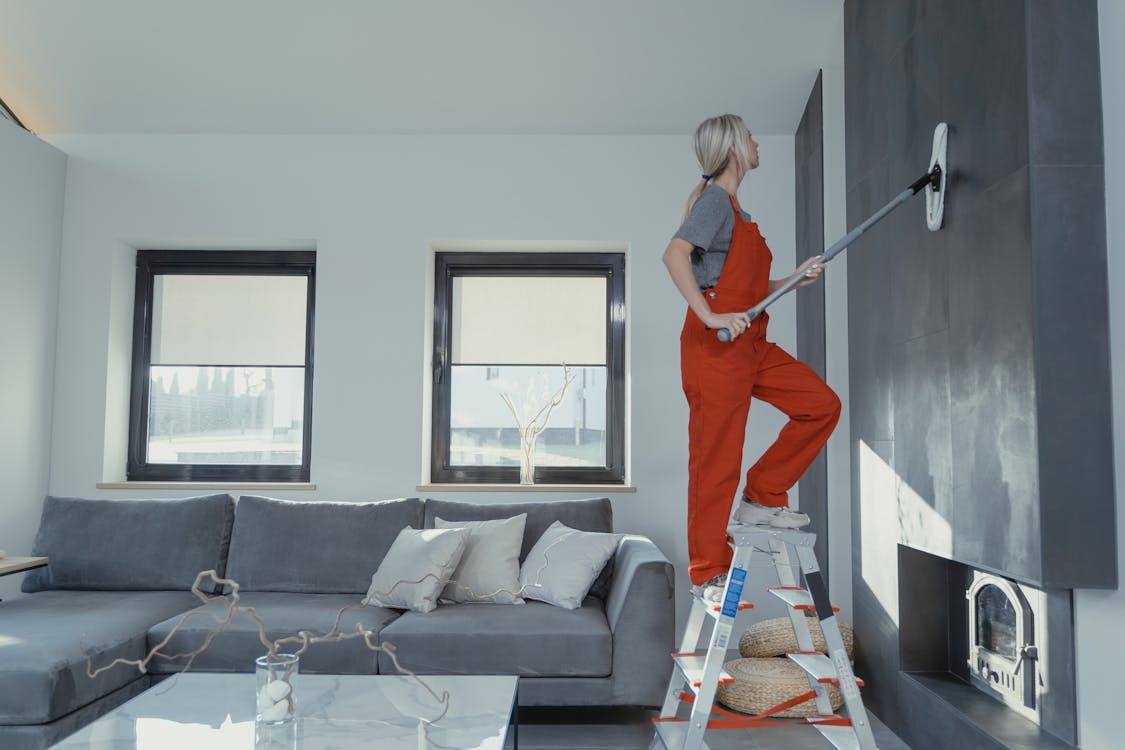Table of Contents
Design duo Tavia Forbes and Monet Masters on creating personal spaces
“Every room tells a story,” says Masters. “Everyone can romance their space and see it as art. They just need to know how and know that they can.”
The duo behind Forbes Masters spoke to The Washington Post about navigating the industry as young Black women, sourcing art, and designing meaningful spaces in which to dream, create and entertain.
Creating custom spaces that reflect clients’ personality and taste
Monet Masters: It’s easy to get a room that looks different every time when you truly are catering to the client. We get to know our clients, their function, their style of travel, their quirky pieces of furniture or heirlooms that have been passed down. And that is the start and inspiration to our spaces.
With that foundation, you could never have two rooms that look alike. We’ve had a lot of clients reach out to us and say, “I didn’t see my particular style in your portfolio, but because I saw so many different styles [reflected], it made me feel confident that you’re able to execute.”
That’s how we’ve [developed] such a diverse portfolio, because we truly do cater to the client — collecting information and getting to know the client at the start of the project.
Telling a complete story despite the unexpected
Masters: Tavia and I were doing a basement remodel for a client’s husband, as his Christmas gift. The only thing that we had to consider was this hideous cockatoo side table. The husband loved sailing, which is why he had a cockatoo table.
The entire table was an oversized red cockatoo with a piece of glass on top, and the cockatoo held the glass. When we saw that table out of the context of the space’s full story, it was hideous. We were kind of upset that we even had to use it.
In the end, it made the space and it was our favorite piece because it’s what held everything together. We [thought of] elements that you would see on a boat or yacht and implemented some of those things throughout the space. So all of the same elements are there — wall art, texture, fabrics, table top accessories — to cater to the narrative that’s telling the story.
That’s why there are no missing pieces. We consider the room from every angle. Sometimes we’ll randomly walk to a corner and then look at the room from that view and say, “Oh, we need a piece of art on that wall” to ensure that the room is full and complete.
The importance of sourcing and selecting artwork
Tavia Forbes: We use some local galleries here in Atlanta to help our clients curate art and to source art, particularly Black art. We have some favorite Black artists and discover new artists every day as we source for projects. Or we work with a gallery in terms of placing a piece, particularly when we do show houses because we get to borrow expensive pieces, and with sourcing art for a client.
When we don’t have a great budget for art, we do use a website called Society6. It’s a collective of a bunch of artists that we sometimes narrow down depending on what we’re placing.
Also, Etsy is a great source for art. We try to tie in something close to the client. Or we connect a client to a curator that’s going to pull pieces that will appreciate in value, work with the home and speak to their family.
Masters: Buying art is an investment, and that was new to us. Most of our clients now have large art collections, and we always advise that they work with an art curator or go to places like Tavia mentioned, specifically Society6 and Etsy, because those artists are putting their own work up themselves, or work with an art curator because you should have a tie to that piece.
That’s how we started to feel about our spaces too: wanting to leave our clients with an understanding of the materials we were using and even the shapes or styles of the furniture that we were using so they can tell the story of their room, because the room is also art.
Masters: It gives the room more depth. I personally cannot stand to have things that most people have. The more you see it, it seems “mass produced” and that waters it down for me.
Recently we did our first local Home for the Holidays Showhouse here in Atlanta. We wanted to cater to the demographics of where this home was. It was very traditional, so this was our first time using antiques in our space. It made us so overwhelmingly proud to use antiques — things that we have yet to use for ourselves or the majority of our clients, who are Black, because we don’t typically have heirlooms.
We were introduced to these amazing showrooms with beautiful antique pieces. Surprisingly, there was still a connection [to those pieces]. The connection came from marveling at the age and how furniture was made then. It speaks again to the character and history. We found through this Showhouse project that adding a little bit of something old enriches the project and gives it a lot more character.
You don’t want to design a space that your client comes into and literally doesn’t want to sit in because they’re afraid to touch anything, or where they don’t connect with anything yet because they haven’t lived in it. Now when we bring in something that’s a little broken or rusted that we found in an antique shop, they’re more prone to come close to it, to touch it, examine it and invite themselves into the room.
Navigating the interior design industry
Masters: We learned quickly to be unapologetic about our style and how we present ourselves. I feel like it doesn’t matter how you present yourself as a Black person and Black female in the industry: Even today with our success, people are surprised by us.
It’s clear that they have low expectations of you. It’s such an honor to be able to prove them wrong. That’s why we’re humble and unapologetic about ourselves at the same time.
We have experienced those things separately and together, and even now after our success. I don’t think it’s going anywhere. But I think that you have to understand that there is always a game in the game of life, a sub-game, if you will, depending upon the industry you’re in.
To spend time complaining about it is not an option for us anymore.
Forbes: We’re used to being undervalued.
We’re used to having to work 10 times harder to make the same on a project. We routinely have taken on way too many projects at a time to pretty much make what a White designer would make on one project and sometimes in those conversations, it’s embarrassing to say how many projects we’re working out at one time.
We’re doing quadruple time to get to the same level. Like Monet said, we’re not going to complain about it. We’re going to do what we need to do.
Clients they can’t work with and manifesting dream clients
Masters: Clients who don’t trust the process, who don’t understand the process and who are not willing to learn the process. We would not want to work with those clients who are not concerned about quality. They don’t care about the story. They want it to be filled in the next two days. And that’s not for us.
Rihanna would be a dream client.
We have some elements of dream clients within our clientele now. Our clients are cool. They’re hard-working. A lot of them are corporate workers, doctors and entrepreneurs, so they understand structure and process and hiring for their weakness, and that sets the tone for a great relationship. I’m thankful for the clients we have. But we just need to add Rihanna.
Alexis E. Barton is a journalist in Birmingham, Ala.







More Stories
How Regular Office Cleaning Can Boost Employee Productivity
The Japandi Style: A Harmony of Japanese and Scandinavian Design
Kwong Von Glinow integrates model making into its design process